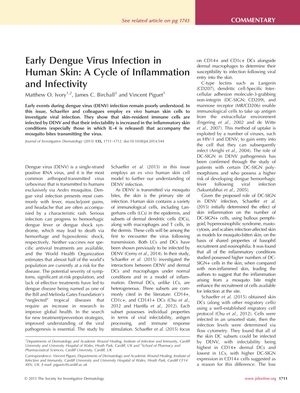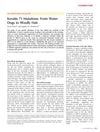Early Dengue Virus Infection in Human Skin: A Cycle of Inflammation and Infectivity
July 2015
in “
Journal of Investigative Dermatology
”

TLDR Chicken feather gene mutation helps understand human hair disorders.
The document highlights the use of avian models, especially the feather organ, to gain insights into the mechanisms of sex hormone-dependent appendage growth, which is relevant to human hair growth patterns. It points out that a mutation in the KRT75 gene is responsible for the distinctive feather shape in Frizzled chickens and has implications for human hair disorders such as pseudofolliculitis barbae. The study of avian α-keratins, which are less diverse than mammalian α-keratins, may help in understanding the architecture of complex skin appendages. The document also notes the presence of neurotoxins in the skin and feathers of certain birds, similar to poison dart frogs. The feather model is proposed as a valuable tool for interdisciplinary research with potential applications in biomedical fields. The research was supported by NIAMS and CIRM Pre-doctoral Training Grant, and there was no conflict of interest reported.
